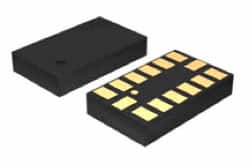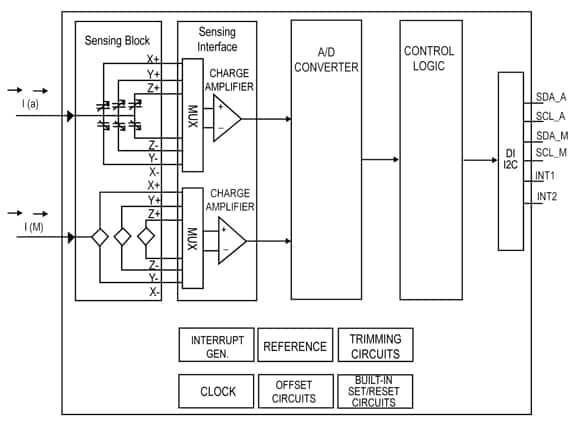Sensor Requirements for Human Fall Detection Systems
投稿人:电子产品
2012-12-20
Cell phone and notebook PC makers have long used gyroscopes and accelerometers to lock up a hard drive or otherwise shut down a device to minimize damage when it is dropped or knocked off of a surface. For these fall detection applications, extremely precise gyroscopes measure and maintain orientation, while accelerometers measure all acceleration, or the rate of change of the velocity of the object relative to any inertial frame of reference, unless based on gravity. (Like the human body on Earth, an accelerometer is not sensitive to the "acceleration of gravity", per se).
In the case of fall detection, the sensor measures weight per unit of mass, or specific or “g” force. It uses the weight measurement to measure its own acceleration relative to free-fall. Both single axis and multi-axis accelerometers detect magnitude and direction of acceleration and can sense orientation. Not only can multi-axis accelerometers be used, but multiple units or pairs can detect the proper acceleration of a frame of references.
Humans have very predictable things we do daily. We walk, stand, sit, lie down, and bend. These activities have extremely predictable patterns. By placing tri-axial accelerometers at precise body locations, systems easily recognize these patterns and the motions or transitions can be measured using both linear acceleration and angular velocity.
Should someone fall who is being monitored, the goal would be to ascertain with certainty that it was really a fall, and provide assistance as soon as possible. Those likely to fall are often instructed by the medical profession not to move, or risk doing more damage. The dilemma then is: How can caregivers be notified (without false positives) so they can provide immediate assistance?
Real-time detection of falls and their urgent communication to a telecare center may enable the rapid medical assistance that is needed. This article will examine all of the key design elements of a human fall detection system.
Design strategy
Fall detection systems typically use one or more of the following methods:
- Analyzing acceleration to detect falls using a four-axis accelerometer or tri-axial accelerometer, typically using measurements from the waist or hip. The downside is that false positives occur when a person either jumps or sits down quickly.
- Using acceleration and body orientation data to detect falls. Three sensors, a gyro sensor that monitors body orientation, a piezoelectric accelerometer that monitors vertical acceleration shock and a vibration sensor monitor body movement. Accuracy is improved, but posture information is lacking, as only the trunk orientation is used.
- Adding complex inference techniques to improve accuracy, such as adding multiple accelerometers and performing activity recognition. There is significant computation necessary in this case, making it generally inappropriate for fall detection
- Finally, there is a help-button based medical alert, which works well when the person is conscious and able to touch the button – which is not always the case.
Suitable sensors
Given the activities of daily living (ADL), using tri-axial accelerometers at various body locations enable systems to recognize these activities. The motions common to these ADLs, or the transitions between them, can also be determined by measuring linear acceleration and angular velocity to conclude whether or not the motions are intentional. It is by using a combination of algorithms, accelerometers, and gyroscopes that attempts to both accurately measure and diagnose motions, as well as to reduce false positives and false negatives, resulting in improved fall detection accuracy.
What can typically go wrong is that the fall does not necessarily resemble one. The person may not end up flat on their back on the floor. They can fall down steps, be crumpled over an item tripped over, or fall from a ladder, among other things. Algorithms used to identify these situations often take an outrageous amount of computational resources – affecting the real-time ability of the system.
Let’s take a look at the hardware side of things. The following sensors used to measure motion, or lack thereof, are suitable for fall detection application. The Analog Devices ADXL345 3-axis iMEMS Digital Accelerometer (Figure 1), for example, is a small, thin, ultra-low power 3-axis accelerometer with high resolution (13-bit resolution measurement at up to ±16g). Special sensing functions are provided. Activity and inactivity sensing detect the presence, or lack, of motion by comparing acceleration on any axis with user-set thresholds.

Features include ultra-low power – as low as 23μA in measurement mode and 0.2μA in standby more at VS = 2.5 V (typical). Power consumption scales automatically with bandwidth, free-fall detection, a supply voltage range of 2.0 to 3.6 V, and activity/inactivity monitoring,
The motion-activated functions of the LIS331DLH by STMicroelectronics (Figure 2), a MEMS digital output motion sensor with a high performance 3-axes “nano” accelerometer, are used for free-fall detection. The device features ultra-low-power operational modes that allow advanced power savings and a “smart sleep” functions to wake up quickly. It can be configured to generate interrupt signals by inertial wake-up/free-fall events, as well as by the position of the device itself. It is available in a small, thin, plastic land grid array package (LGA). The device has digital I²C/SPI serial interface standard output.

The STMicroelectronics LSM303DLM Sensor module (Figure 3) is comprised of a 3-axis accelerometer and 3-axis magnetometer. In addition to free-fall detection, it is used in position detection, motion-activated functions, and vibration monitoring and compensation. The module is a system-in-a-package (SIP). The various sensing elements are manufactured by using specialized micromachining processes, while the IC interfaces are realized using a CMOS technology that allows the design of a dedicated circuit, which is trimmed to better match the sensing element characteristics. The LSM303DLM has a linear acceleration full-scale of ±2 g / ±4 g / ±8 g and a magnetic field full-scale of ±1.3 / ±1.9 / ±2.5 / ±4.0 / ±4.7 / ±5.6 / ±8.1 gauss, both fully selectable by the user.

The LSM303DLM includes an I²C serial bus interface that supports standard mode (100 kHz) and fast mode (400 kHz). The system can be configured to generate an interrupt signal by inertial wakeup/free-fall events, as well as by the position of the device itself. Thresholds and timing of interrupt generators are programmable on the fly by the end user. Magnetic and accelerometer parts can be enabled or put into power-down mode separately. The LSM303DLM is available in a plastic land grid array package (LGA).
Conclusions
Falling is the main cause of hospitalization for people over 65 years of age, with an estimated 30% of older people falling at least once a year. The use of gyroscopes and accelerometers in insuring the safety of our seniors via alert systems relies on the same concepts as free-fall measurements – even though the stakes are considerably higher. While fall detection technology used in consumer electronics to avoid damage from dropping is extremely effective, its use in accurately ascertaining falls compared with normal ADLs still has some distance to go and, in particular, fool-proof fall detection algorithms are still under investigation.
For more information on the products mentioned, use the links provided to access product information pages on the DigiKey website.
免责声明:各个作者和/或论坛参与者在本网站发表的观点、看法和意见不代表 DigiKey 的观点、看法和意见,也不代表 DigiKey 官方政策。









